Travel like a local, they say. But if you’re going to do that in Manila, brace yourself. You’re in for quite a ride.
Taking public transportation within Metro Manila is unpredictable, to say the least. For first-timers, commuting around Manila requires a great deal of planning. You have ample of options — MRT, LRT, cab, bus, jeepney, tricycle — but none of them guarantee a hassle-free journey. Manila has so much to offer to tourists, but the problem is getting from one destination to another. The simple truth is, like many third world cities, Manila is congested, polluted, and highly disorganized. Except for outbound buses, none of these options work around a fixed, reliable schedule. Traffic has been the biggest problem. And the rain can make matters much worse.
Take a deep breath, hold your valuables tight, and prepare your soul to be squeezed out of your body! This is commuting, Manila-style. Updated: September 2018
General Tips
Here are some things you have to remember before you start exploring.
- Rush hours. If your route uses a major thoroughfare like EDSA, commuting during rush hours is not a good idea. These hours are from 7am-10am and 5pm-8pm, when students and workers go to work and school and come home. No, not even the MRT can save you from this. All train cars are so packed, it feels like Manila is about to go after another world record. As a rule of thumb, either be an early bird or go out at around noon. Lunch time is usually a great time to take public transportation. The sun may be a little too much, but there really isn’t much traffic within this period.
- Rains and floods. Manila is soaked in floodwater at least once a year, and it’s frustrating how this is still not addressed appropriately up to now. But all rants aside, citizens have learned to live with it. (Sucks, I know! Ugh, ranting again.) Here’s the bottomline, if it’s been raining heavily all day, chances are that the traffic has built up. Ergo, not a great time to hit the road. Of course, there are exceptions. But to be on the safe (and dry) side, wait it out.
- Pickpockets. It is also during the rush hours when evildoers are in their game. The crowdedness and discomfort might distract you from watching your valuables that you won’t have them when you exit the vehicle. Keep your phone or wallets in your front pockets.
If these crazy hours catch you on the road, I suggest that you let it pass. There’s a lot to do in Manila, anyway. Go malling, watch a movie, or kill time at a cafe until the main roads stop being a massive parking lot.
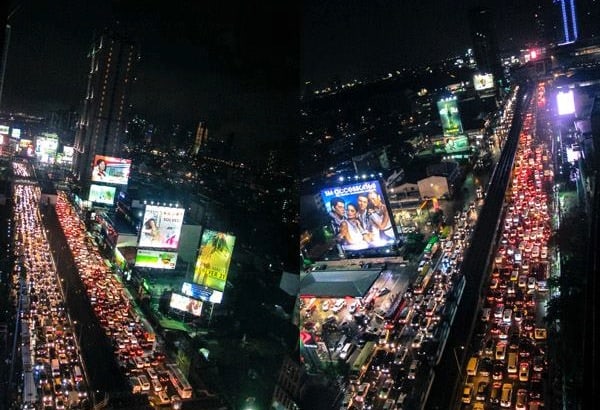
By MRT/LRT
There are a few train lines that straddle the metropolis including LRT1, LRT 2, and MRT 3. These lines are interconnected, which should make things easier in theory. But they are not really “fully” in synergy. For example, MRT-Taft and LRT-EDSA stations are linked, but one must still exit the MRT station and purchase a separate ticket to board the LRT. This requires another queuing, which can take much time.
TIP: You can bypass this by getting a BEEP card, which is a reloadable card that you can use at all train lines (LRT 1, LRT 2, MRT 3) and the BGC bus. You can get it from a teller booth or through a ticket machine at the station or at Family Mart.
The MRT-3 (Metro Railway Transit System, aka Blue Line) spans the length of EDSA, the major artery of the capital. Why take the MRT? It’s fast, and it connects many of the key attractions in five cities: Pasay, Makati, Mandaluyong, San Juan, and Quezon City.
For starters, the shopping malls. A ride from one end of the MRT to the other will give you a tour of the metro’s most popular malls — all fifteen of them (the last time I counted): from the Metropoint Mall beside Taft Station to Trinoma just next to North Avenue Station. In Makati alone, the poster city of commercialism in the country, lies a cluster of malls: Greenbelt, Glorietta, Landmark, and SM Makati. Anyone who has been there will tell you that it has everything — from a simple quirky store selling simple quirky stuff to high-end branded boutiques selling high-end branded stuff.
The LRT 1 runs through four cities: Pasay, Manila, Quezon City, and Caloocan. Manila takes the greater fraction of the line. If you wish to visit the top historical and cultural attractions, LRT1 is your line.
- Single Journey vs Stored Value Tickets. If you’re gonna take the MRT/LRT just once or twice, a Single Journey ticket is enough. Otherwise, the Stored Value ticket (PhP100) is a wise, wise, wise choice. Not only do you get little discounts and a bonus ride, you also bypass the long queues.
- Exact Fare Lanes. Every station has an Exact Fare Lane, which moves much faster than the other queues.
- Inspection. All stations have wizarding guards, who will inspect your bags before boarding. Wizarding because many of these guards usually just poke your bag with a wand, and voila, you’re bomb-free! If you have gift-wrapped items, you will be asked to open them.
- Prohibited Items and Activities. No eating, drinking, spitting, littering, and smoking within the paid area of every station. No bulky and long objects. No food and drinks in unsealed containers. No inflammable or poisonous products (paint, pesticides, etc.)
- Platforms. Most stations have their platforms on the outer edges of the station, with the railway running between them. At these stations, there are no ways to get to one side from the other. Say, if you mistakenly entered the northbound side and you really intend to go south, you will have to exit again and probably take a flight of stairs to get to the other side. Taft, Buendia, Boni, and Shaw stations are the exceptions.
- First Car. The first car of every train is exclusive to women, children, senior citizens, and people with disabilities. If you don’t belong to any of these groups, you just have to man up and brave the testosterone-powered cars.
- Where to stay inside the train. If your destination is just one or two stations away, stay near the door. Don’t walk right into the depths because you might not be able to get out on time. If your destination is the very last or second to the last station, please move farther inside. It’s actually much colder and comfortable there.
- Queue up. It’s only recently that MRT passengers have discovered the joys of falling in line when boarding the train. Let’s not break it now.
The cliche is right. It is not the destination. And a ride across Metro Manila is quite a journey. For instance, an MRT ride allows incredible panoramic views of many parts of the metro! But during rush hour, this is probably the least of your concerns.
By Regular Bus
The city buses plying the major routes are divided into three types: A, B, C. The first two have alternate stops, while the last stops at every loading/unloading area. This Rappler infographic explains it succinctly. Click on the pic to enlarge.
However, many buses don’t follow this scheme.
Buses are probably the biggest problems of the major roads in the city. Trust me, I live and work along EDSA. Every single day of my life, I watch these buses break traffic rules and create jams while they’re at it. They are assigned their own stops, but many stop anywhere regardless. They are assigned their own lane, but they still invade the other lanes regardless. And they wait for passengers for, like, forever, as though waiting for Jesus Christ to come aboard and begin the Rapture.
Speaking of…
- Preachers onboard! Don’t freak out if during the bus ride, someone stands, reads a verse or two from the Bible, and tell you that you are a sinner. The moment they’re done, they will distribute empty envelopes where you can place your donations. Don’t worry, you’re not required to give. It’s become a common thing lately.
- Food vendors. Drivers and conductors usually allow food vendors to board and sell inside the bus. Usual products are fried peanuts, fresh fruits, fish crackers, quail eggs, donuts, and bottled drinks.
- Safety. Petty crimes and modus operandi inside buses are not unheard of. To be safe, take a seat near the driver, the door, or where most people sit. If you have valuables inside your bag or pockets, try your best not to fall asleep.
- Aircon vs Ordinary Buses. Ordinary buses are okay, but don’t complain if your white hankie turns black after you wipe your face with it. Hahaha.
- Finding the right bus. Buses in Manila are not numbered. The final destination and bus type (ABC) are displayed in front of the bus. But that’s not the only thing you should pay attention to. Mind the other labels — indicating a few other stops and routes. For example, Cubao Ibabaw will make a stop in Cubao, but Cubao Ilalim will skip it. When in doubt, ask. Filipinos are always happy to help.
Again, taking the bus during rush hour may not be the best idea in the world. Unless you are with someone you are willing to be stuck with for a couple of hours or so.
One sliver of hope is the P2P bus.
By P2P Bus
If you’re coming from the airport, taking the P2P bus is a good option.
The past couple of years saw the launch of P2P buses. Genesis Transport operates the buses to Clark (via Resorts World and Robinsons Galleria, Ortigas) and UBE Express runs the rest. Here are the routes, fares, and operating hours.
There are four routes that are clearly illustrated on this map.
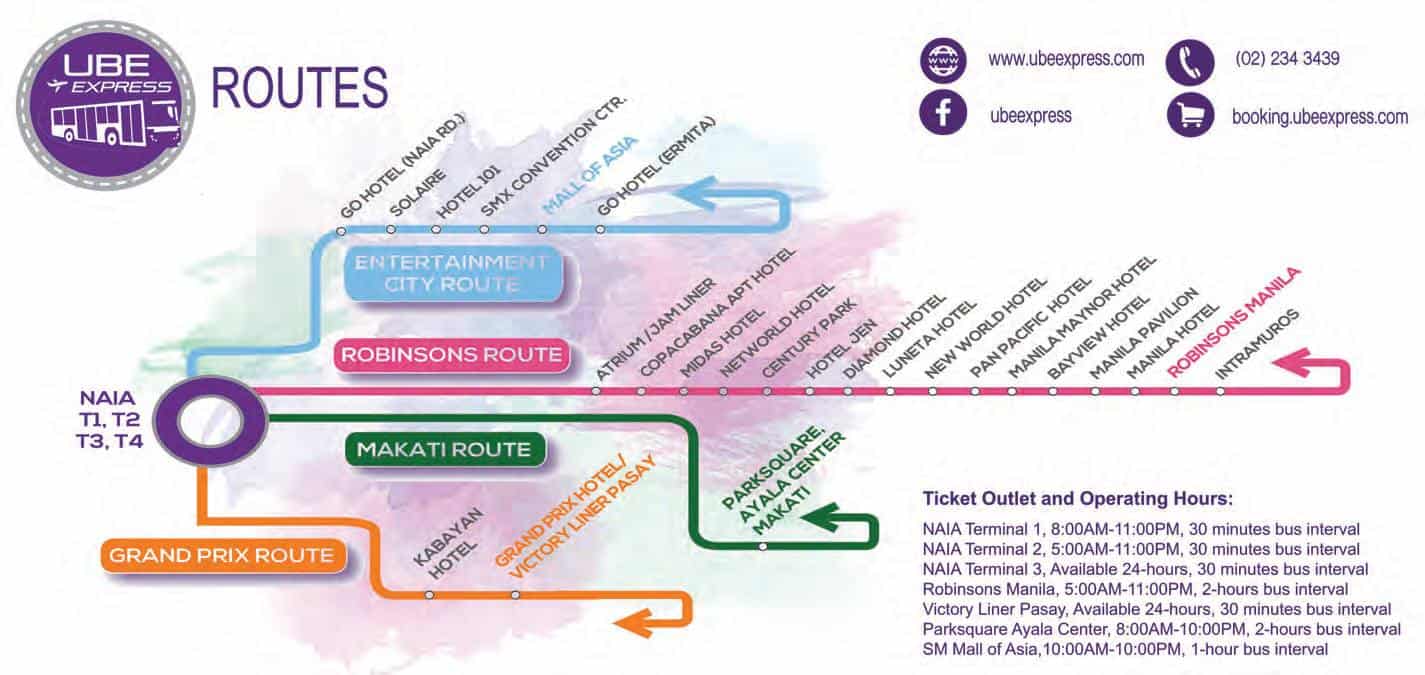
Operating Hours:
- NAIA Terminal 1: 8am-11pm, 30 mins interval
- NAIA Terminal 2: 5am-11pm, 30 mins interval
- NAIA Terminal 3, available 24 hours, 30 mins interval
The fare is fixed at P150 ($3).
If you’re headed to Clark, ride the Genesis P2P Bus. Fare: P350. More info about that here: Manila-Clark P2P Bus Schedule
By Taxi
Ordinary cabs charge a flagdown rate of PhP40 and PhP3.50 per 300 meters. Airport cabs charge much more, at PhP70 flagdown and P4 per 300 meters. You know the cab is an airport cab if it’s yellow.
Here are some reputable taxi companies and their contact numbers:
- Basic Taxi (900-1447, 900-1448, 643-7777)
- MGE Transport (363-6096, 364-8260)
- Sturdy Taxi (330-3568, 361-1282)
- EMP (293-5930, 293-5931)
- Dollar Taxi (921-2383, 927-8718)
You can also hail a cab using the commuter app GRAB.
Cab fare is a lot higher than the jeepney, MRT, or bus fare. But there are cases when taking a cab cannot be helped or makes a bit more sense. For example, when you’re a group of three or more, you can simply split the cost.
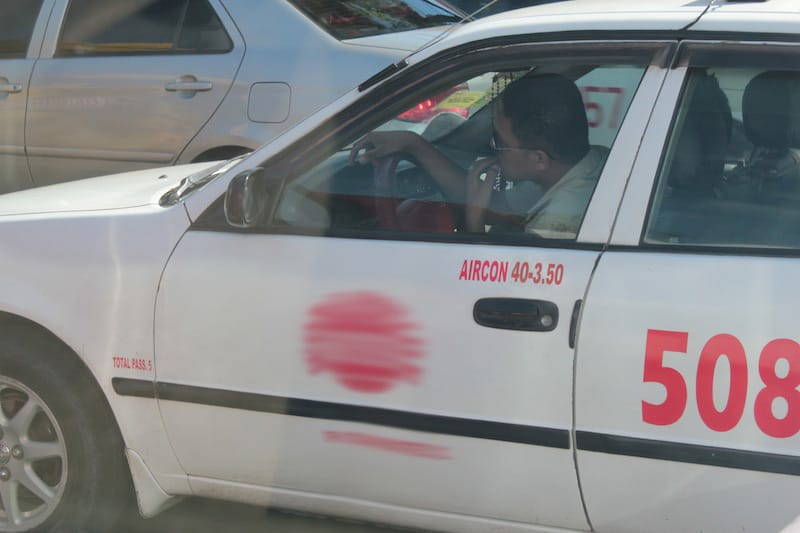
By Jeepney
Jeepneys have become an icon of the Philippines. These colorful rides are best for short distances. It is cheap (PhP8 for the first 4 km) and fast, since many of them do not take major thoroughfares.
The jeepney is like a mini-bus. It plies a specific route and it can’t veer away from that. If your destination is not along the way, you’re gonna have to get off at the nearest spot, and make your way on foot or by tricycle (if available) to your exact destination.
- Making it stop. Say the word “para” if you want it to stop so you could alight.
- Making payments. Some jeepneys have conductors, who collect fares. But most of the time, you will need to pay directly to the driver. Because it is cheap, always pay in coins or small bills. Handing P500 for a P10 ride is rude and will probably irk the driver.
- Paying it forward. If you take the jeepney, you are expected to pass other passengers’ fares to the driver. There’s just no other way for those seated on the far end to send their money across. In the same way, if you’re the one seated farthest from the driver, you can pass the money to the next person and say, “Paki-abot po.” That person is expected to do the same until it reaches the driver.
Uncomfortable is definitely an understatement during rush hour, but it gives a pungent taste of what most locals need to go through on a daily basis. You will probably notice how many passengers are being serviced every day and wonder how much the government earns from all these fares and taxes. And if while traveling you find yourself thinking about why people endure this, why there can’t be more trains or have a more efficient system, when it will improve, why it hasn’t improved yet, or whether or not it will in the first place, then CONGRATULATIONS, you’re now one of us.
By Grab
If you’re used to UBER in your country, you can try GRAB in Manila. Grab is a ride-sharing app just like Uber. Uber used to operate in the city but their Southeast Asian business was acquired by Grab in early 2018.
If you have a smartphone, you can just download the GRAB app and you can charter a taxi or a private car with it. You can pay cash or by credit card.
- GrabTaxi: The taxi uses the meter. You pay the cost displayed on the meter and an additional booking fee, which is displayed on the app at the end of the trip.
- GrabCar: You pay the amount displayed on the app at the end of the trip.
It’s reliable and cheaper than in other countries most of the time. The only criticism I have is that it’s hard to get a ride these days because the number of cars or taxis in their system can’t keep up with the demand. Hence, don’t try to book a ride at the last minute. Always have time allowance so you reach your destination on time.
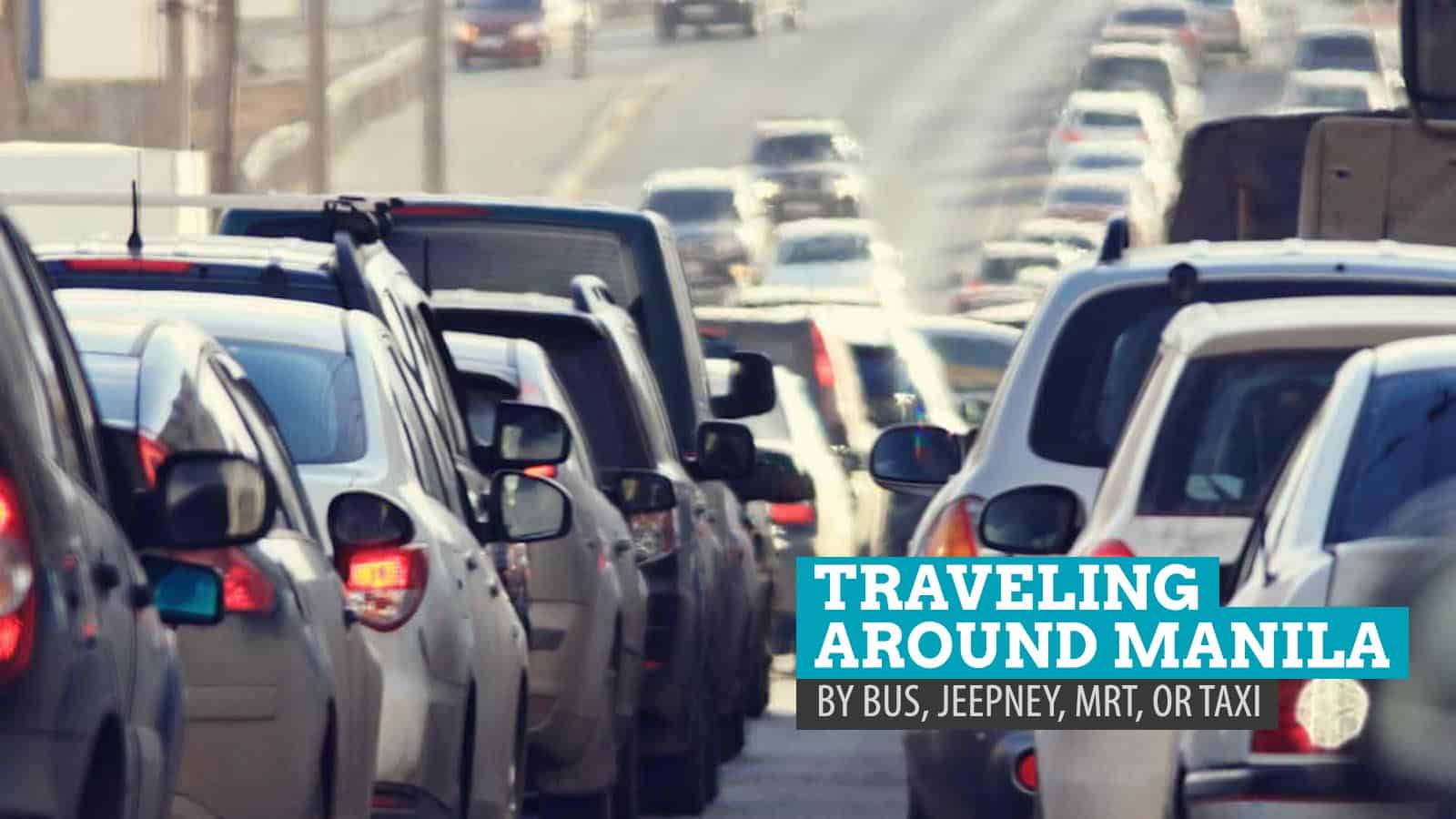



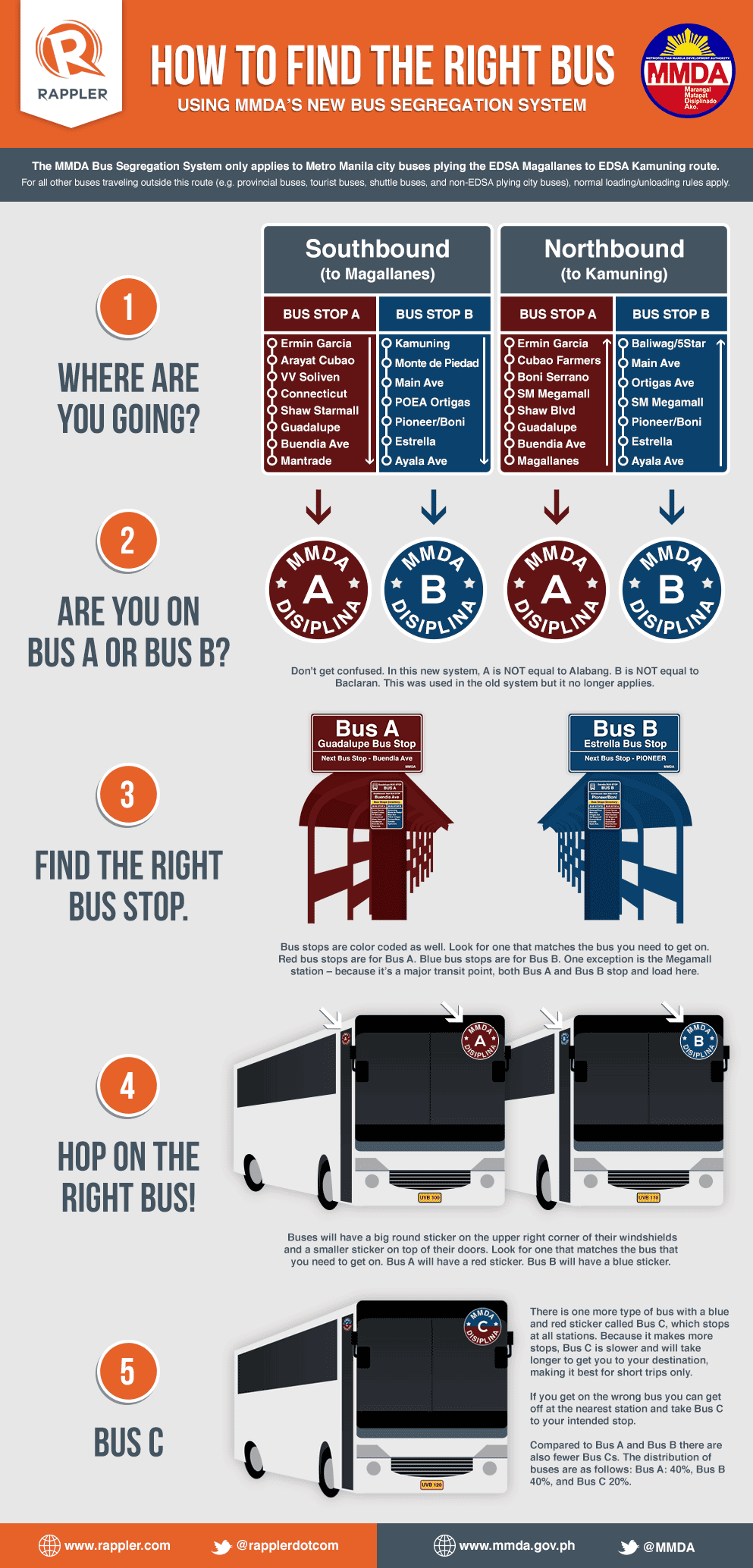






















Manila is simply a maze, and these are really great tips!
Hey The Poor Traveler,
You might want this additional info that’s perfect for foreigners who hate overpricing/haggling!
By Taxi:
Book a taxi with GRABTAXI App for a safer, faster, and more convenient ride!
1. Download GrabTaxi on iOS (biy.ly/grabtaxi-ios), Android (biy.ly/grabtaxi-android), or Windows Phone (biy.ly/grabtaxi-windows)
2. Book a taxi with your smartphone in just 2 taps of a button!
3. Ride safely!
http://www.grabtaxi.com
Hey PoorTraveler. I love your post. This is definitely true! I’ve experienced this everyday especially when going to work. The rush hour and floods are really annoying. That’s why right now I am looking for house for sale philippines near makati but I heard that floods is also a problem on that area.
Love your post! Great for people who are curious to check out Manila!
[…] you’re here, take a look at this helpful post about getting around Manila via other public means: jeepney, mrt/lrt, taxi, […]
Thanks for this great post. I also lived in Manila and created my personal list of the best ways to get around in Manila.
Would be nice to hear what you think of it.
About buying different tickets for the various train lines, we now have the BEEP Card, which you can use across the 3 lines. You can buy the card at the stations but you can load them also at Family Mart Convenience Stores.
Thanks Jee J! We’ll update the post!